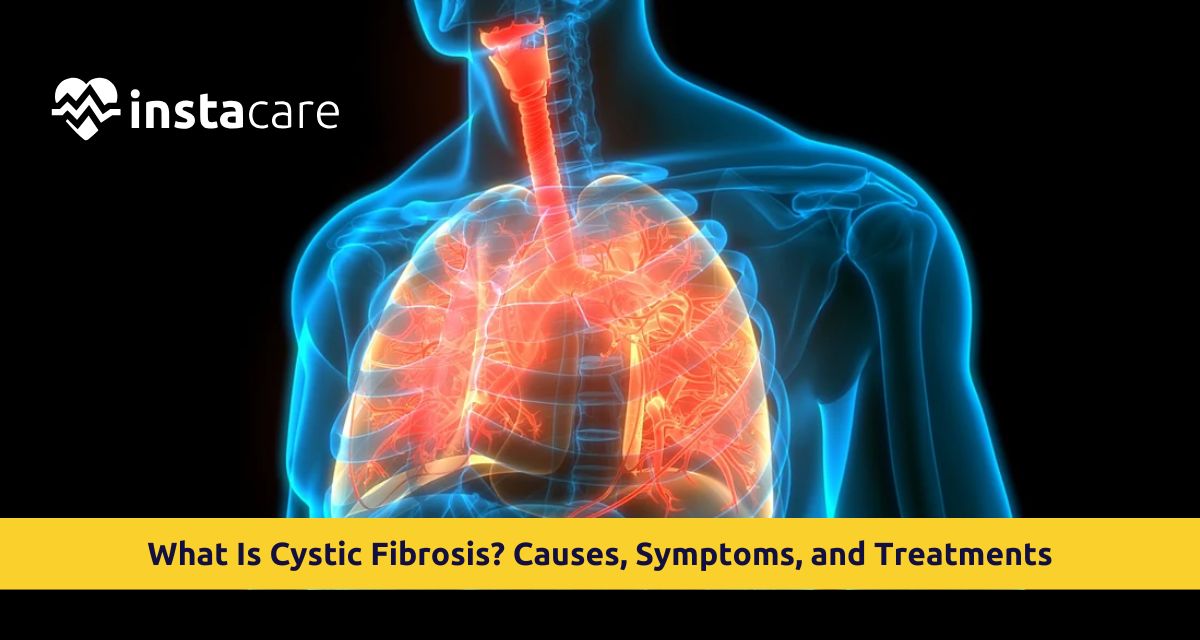The severe genetic disease CF affects both the lungs and the digestive organs of patients. The CFTR mutations generate sticky mucus production, causing this condition. Mucus blockade creates one element of the medical condition, which manifests as lung infection and digestive problems. Since cystic fibrosis alters how people live their lives, receiving proper information about the disease would benefit anyone who lives with it.
Causes of Cystic Fibrosis
The key Causes of Cystic Fibrosis are CFTR gene mutations. The gene encodes for a protein that regulates salt and water movement into and out of cell membranes. The CFTR gene mutations thus result in faulty or absent protein production. The symptoms that result are those of CF. The disease is also inherited due to an autosomal recessive pattern; thus, the child has to inherit two faulty genes from both ill parents to fall sick.
More than 1,700 mutations, the most common being F508del, influence the protein's function in transporting chloride ions and creating the thick mucus found in CF. If both parents are carriers of the CFTR mutation, the chances of the child being born with Cystic Fibrosis by a 25 percent chance exist.
Symptoms of Cystic Fibrosis
Cystic Fibrosis Symptoms differ among individuals but are typically most frequently observed to affect the respiratory and gastrointestinal tracts. For lung symptoms, such patients tend to present with a productive cough with very profuse production of thick sputum, wheezing, and dyspnea. Patients with CF also tend to be in constant danger of recurrent infection of the lungs in the forms of bronchitis and
pneumonia, once more causing progressive destruction of the lungs.
Infected gastrointestinal tracts may result in patients with Cystic Fibrosis having difficulties in nutrient absorption, which may affect their growth with poor weight gain, especially in children. Such patients also may have greasy, heavy stool-like presentations and intestinal obstruction, especially in neonates. These can be detected early and treated to control unbearable conditions.
Diagnosis of Cystic Fibrosis
Cystic Fibrosis Diagnosis has been historically a series of tests. The most commonly used test is the sweat test, which measures the salt concentration in sweat. Higher sodium and chloride levels indicate possibly CF. A sweat chloride level of 60 millimoles per liter or greater is widely recognised as evidence of the disease.
Genetic testing for cystic fibrosis will also identify CFTR gene mutations. It is especially useful when tested in newborns and can assist with confirmation in symptomatic patients. Newborn screening, such as CF screening, is utilised in most countries and allows early treatment.
Cystic Fibrosis Treatment Options
While there isn't really a cure for Cystic Fibrosis, Treatment Options exist to manage symptoms and enhance the quality of life. The individual's treatment is some form of drug, pulmonary, or nutritional treatment.
Mucolytics are drugs used to reduce mucus thickness. Second-line drug medications used in CF include bronchodilators to dilate airways and antibiotics to prevent and treat lung infections. Pulmonary therapy, such as inhaled and chest physiotherapy, maintains healthy lungs.
Therefore, nutritional supplementation is equally crucial for the CF patient. An increased caloric intake satisfies the increased energy demands, which are partially satisfied by the pancreatic enzyme supplements, and enhances digestion and nutrient uptake.
Home Management of CF
Home management of Cystic Fibrosis is directed and structured. By conforming to the structured management regime, families are turned into care partners, thus managing symptoms. They handle routine activities such as chest physiotherapy, drugs, and nutrition with all their reattributes.
It is information that a family needs to make them realize how vast amounts of information come to them from the moment the symptoms shift to the moment they make changes in their treatment regimens as needed.
New treatments for CF
Much advancement has been made in the science sector in the last two years, with the creation of new drugs for Cystic Fibrosis. CFTR modulators are a new breakthrough drug that corrects the defective CFTR protein function. The medications have been observed to enhance lung function and overall health in individuals with specific CFTR gene mutations.
The second area being researched is gene therapy. Gene therapy seeks to treat the CFTR mutations at a genetic level, which one day could deliver a more definitive cure for the disease. These treatment options are now wholly experimental, but by no means shut the door on future possibilities.
Better medical care and treatment significantly improve the life span of such patients. With such high-quality treatment, patients like this can often live into their thirties, forties, and even beyond.
What to Know about Cystic Fibrosis and Lung Infections?
Medical experts link pulmonary infections to cystic fibrosis in an established fashion. The thick lung secretions provide excellent growth conditions for bacteria to continue a chronic disease. During the years, Pseudomonas aeruginosa and Staphylococcus aureus pathogen types have repeatedly led to most lung damage.
Regular monitoring and early intervention of lung infections are necessary to maintain lung function. Patients with cystic fibrosis are commonly presumed to be under strict medical care so that their respiratory status can be assessed and their therapy modified as indicated.
Symptoms
Cystic fibrosis is a sign of respiratory complications because It is accompanied by gastrointestinal distress. It thickens mucus, obstructing the pancreatic duct, for instance, by stopping the flow of digested enzymes into the intestines. Therefore, it causes interference and malabsorption in gastrointestinal states.
Pancreatic enzyme supplementation and a very specialised diet will treat the most frequent gastrointestinal adverse effects. Nutritional management will ensure adequate dietary needs and prevent deficiency.
Cystic Fibrosis in Children
Cystic Fibrosis is diagnosed between infancy and adulthood, though clinical symptoms begin at an early stage of life. Parents have noted some signs, including frequent cracking of the skin, the child being too slim, frequent and unexplained
weight gain, and respiratory illnesses. The encouragement and practice of early diagnosis and treatment have enhanced the quality of human health.
CF children neither grow nor develop because they are malabsorptive. Nutritional management, including increased caloric intake and supplementation with pancreatic enzymes, must be performed to enable CF children to grow and develop. Regular follow-up care and careful monitoring of any symptoms must also be performed while treating children with CF.
Conclusion
Cystic fibrosis, a genetic disease, remains hard to treat because patients must receive prolonged medical assistance. Patients and their family members need a complete comprehension of cystic fibrosis, its genetic basis, symptoms, and treatment options. Better treatment research conducted by scientists will drive improvements in the patient's expected lifespan.
Please book an appointment with the
Best Pulmonologist in Lahore, Karachi, Islamabad, and all major cities of Pakistan through
InstaCare, or call our helpline at 03171777509 to find the verified doctor for your disease.

